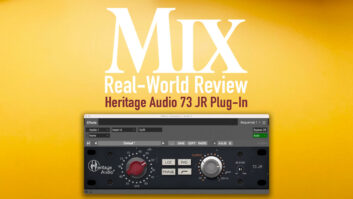From The Godfather game: an audience with Don Corleone
One of the most eagerly anticipated videogame releases this spring is The Godfather: The Game, based on Mario Puzo’s famous book and Francis Coppola’s immortal films, and produced by Electronic Arts at its Redwood Shores, Calif., headquarters. Besides using the voices of some of the film’s original actors, EA also obtained the rights to Nino Rota’s memorable score for the film — at this point, it’s nearly as iconic as the film’s characters.
Some of that music did find its way into the game, but it also became the jumping-off point for the more than 100 minutes of new music that was written by veteran TV and film composer/collaborators Bill Conti and Ashley Irwin. “Unfortunately, the original recordings [of Rota’s score from the early ’70s] were not much use to us,” comments EA audio director Ken Felton. “The recording quality was fairly poor. We knew right off the bat we needed to re-record everything.”
“What happened,” adds Andre La Velle, the game’s music supervisor, “is Ashley and Bill went to Paramount and acquired the reductions of the original score, and then they re-orchestrated a lot of it and then re-recorded the main themes.”
“The classics — the ‘Godfather Theme,’ the waltz, et cetera — were recorded as is,” Felton continues. “They’re pretty much note-for-note and the same orchestration. But we re-recorded them to give us better quality and more flexibility. Implementing music in a game is always difficult. Discrete tracks and smaller cues will give you a lot more options and interactivity. We asked Bill and Ashley to create new music that occasionally hearkened back or paid homage to the original themes. But there are a lot of pieces that are completely new and absolutely different. Because there was no chase scene in The Godfather, there was no taking over a warehouse or extorting a butcher. But a lot of the game has a Godfather melody weaving in and out.”
The music was recorded during two days at Capitol’s Studio A in Hollywood, with Malcolm and Jamie Luker engineering the score and doing some of the editing and mixing. It was recorded to Pro Tools at 48k/24-bit. “After Bill and Ashley approved, the unity gain mixes were delivered to EA by DigiDelivery,” Felton says. “The unity gain mix was about 24 tracks wide and arranged for 5.1 playback. We did some mixing, tweaking and ProLogicII encoding to make it work.”
The Godfather represents a departure for EA in that it’s the first game the company has produced that takes place in an open-world/free-roaming environment; i.e. it has an open-ended story architecture that is not level-based, but instead allows the player to wander through different environments, usually to complete some sort of mission.
“Ours has more music in it than a lot of open-world games,” La Velle says, “and we had to build a system for our ‘living world’ that plays different music, say, for driving, or for being chased, for interrogating somebody, or shooting them and what-not. We also have the mission aspect, where game play is scripted and we’ll use the same piece [of music] as you repeat the mission, although we sometimes randomize that, too.”
Did the composers work from rough animations or descriptions of game action, or what? “Bill and Ashley had locked picture to work with for IGCs, or In Game Cinematics — what most people call ‘cut scenes,’” Felton says. “The real-time, player-controlled missions had basic descriptions and goals. We decided how long they should be and how many ‘levels’ of intensity they needed. Most missions also had a series of success or failure endings. They were written so the music system can cut to them at the next tempo node. The cues were done first on synth. We tested them in-game as best we could. Then, when the cue was approved, it was prepped for the scoring stage.”
In this kind of game, the mixing is an ongoing process that must continually reflect the variability of the game-play situations and environments. This is true of music, dialog and effects — the levels of each are constantly changing as the world of the game changes. “We’d tweak these XML files,” Felton notes, “make small changes, then you click on a batch file and you ‘rebuild’ the game and you play that section again and hear how the change was. You’re doing that constantly.”
There were many other music-related issues to deal with, including sample rate adjustments, bandwidth issues, compression schemes and the peculiarities of different formats. “The key is communication,” Felton concludes. “You have to be close to everybody else [working on the game]. We’re right around the corner from the visual effects artists, whom we work closely with, and all the audio people sit in a little pod. Things change on a dime, and you have to be ready.”




